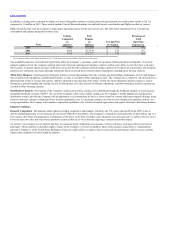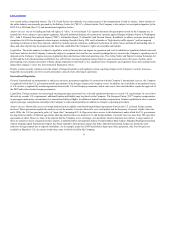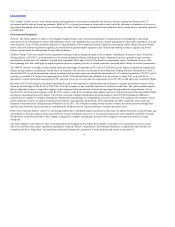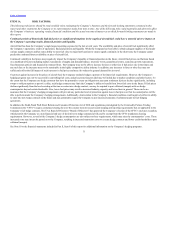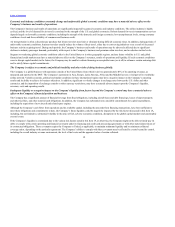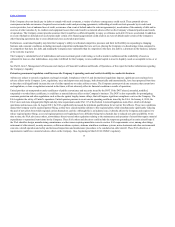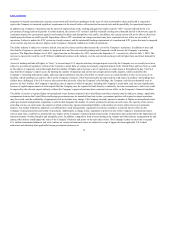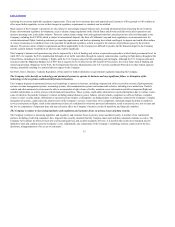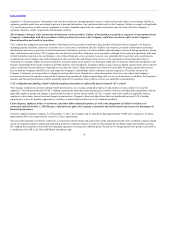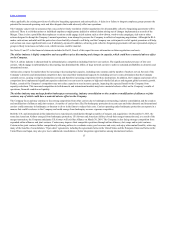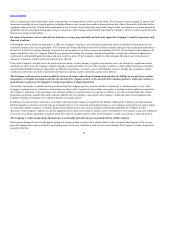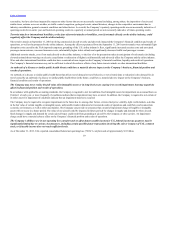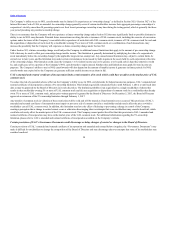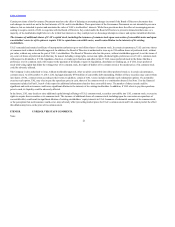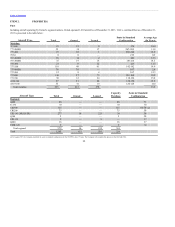United Airlines 2013 Annual Report Download - page 12
Download and view the complete annual report
Please find page 12 of the 2013 United Airlines annual report below. You can navigate through the pages in the report by either clicking on the pages listed below, or by using the keyword search tool below to find specific information within the annual report.
Table of Contents
Economic and industry conditions constantly change and unfavorable global economic conditions may have a material adverse effect on the
Company’s business and results of operations.
The Company’s business and results of operations are significantly impacted by general economic and industry conditions. The airline industry is highly
cyclical, and the level of demand for air travel is correlated to the strength of the U.S. and global economies. Robust demand for our air transportation services
depends largely on favorable economic conditions, including the strength of the domestic and foreign economies, low unemployment levels, strong consumer
confidence levels and the availability of consumer and business credit.
Air transportation is often a discretionary purchase that leisure travelers may limit or eliminate during difficult economic times. In addition, during periods of
unfavorable economic conditions, business travelers usually reduce the volume of their travel, either due to cost-saving initiatives or as a result of decreased
business activity requiring travel. During such periods, the Company’s business and results of operations may be adversely affected due to significant
declines in industry passenger demand, particularly with respect to the Company’s business and premium cabin travelers, and a reduction in fare levels.
Stagnant or weakening global economic conditions either in the United States or in other geographic regions, and any future volatility in U.S. and global
financial and credit markets may have a material adverse effect on the Company’s revenues, results of operations and liquidity. If such economic conditions
were to disrupt capital markets in the future, the Company may be unable to obtain financing on acceptable terms (or at all) to refinance certain maturing debt
and to satisfy future capital commitments.
The Company is subject to economic and political instability and other risks of doing business globally.
The Company is a global business with operations outside of the United States from which it derives approximately 40% of its operating revenues, as
measured and reported to the DOT. The Company’s operations in Asia, Europe, Latin America, Africa and the Middle East are a vital part of its worldwide
airline network. Volatile economic, political and market conditions in these international regions may have a negative impact on the Company’s operating
results and its ability to achieve its business objectives. In addition, significant or volatile changes in exchange rates between the U.S. dollar and other
currencies, and the imposition of exchange controls or other currency restrictions, may have a material adverse impact upon the Company’s liquidity,
revenues, costs and operating results.
Inadequate liquidity or a negative impact on the Company’s liquidity from factors beyond the Company’s control may have a material adverse
effect on the Company’s financial position and business.
The Company has a significant amount of financial leverage from fixed obligations, including aircraft lease and debt financings, leases of airport property
and other facilities, and other material cash obligations. In addition, the Company has substantial non-cancelable commitments for capital expenditures,
including the acquisition of new aircraft and related spare engines.
Although the Company’s cash flows from operations and its available capital, including the proceeds from financing transactions, have been sufficient to
meet these obligations and commitments to date, the Company’s future liquidity could be negatively impacted by the risk factors discussed in this Item 1A,
including, but not limited to, substantial volatility in the price of fuel, adverse economic conditions, disruptions in the global capital markets and catastrophic
external events.
If the Company’s liquidity is constrained due to the various risk factors noted in this Item 1A or otherwise, the Company might not be able to timely pay its
debts or comply with certain operating and financial covenants under its financing and credit card processing agreements or with other material provisions of
its contractual obligations. These covenants require the Company or United, as applicable, to maintain minimum liquidity and/or minimum collateral
coverage ratios, depending on the particular agreement. The Company’s ability to comply with these covenants may be affected by events beyond its control,
including the overall industry revenue environment, the level of fuel costs and the appraised value of certain collateral.
12






